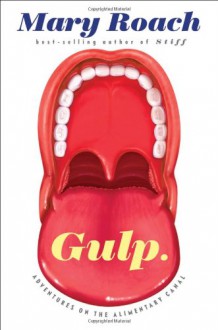

TITLE: Get Well Soon: History's Worst Plagues and the Heroes Who Fought Them
AUTHOR: Jennifer Wright
DATE PUBLISHED: 2017
FORMAT: Hardcover
ISBN-13: 9781627797467
_____________________________
DESCRIPTION:
"A humorous book about history's worst plagues—from the Antonine Plague, to leprosy, to polio—and the heroes who fought them.
In 1518, in a small town in France, Frau Troffea began dancing and didn’t stop. She danced herself to her death six days later, and soon thirty-four more villagers joined her. Then more. In a month more than 400 people had died from the mysterious dancing plague. In late-nineteenth-century England an eccentric gentleman founded the No Nose Club in his gracious townhome—a social club for those who had lost their noses, and other body parts, to the plague of syphilis for which there was then no cure. And in turn-of-the-century New York, an Irish cook caused two lethal outbreaks of typhoid fever, a case that transformed her into the notorious Typhoid Mary and led to historic medical breakthroughs.
Throughout time, humans have been terrified and fascinated by the plagues they've suffered from. Get Well Soon delivers the gruesome, morbid details of some of the worst plagues in human history, as well as stories of the heroic figures who fought to ease their suffering. With her signature mix of in-depth research and upbeat storytelling, and not a little dark humor, Jennifer Wright explores history’s most gripping and deadly outbreaks."
________________________________________________________
*********************POSSIBLE SPOILERS**********************************
________________________________________________________
REVIEW:
This poorly written book is a collection of superficial, sensationalist, chatty chapters on a variety of epidemics (and two extras) that are supposed to be history’s worst plagues (some are, some aren’t) and the heroes (or more likely ignorant fools according to the author) who fought them. There is no original content or any type of original insights in this book, but there are a vast quantity of quotes straight from other (better written) books. This book is long on opinions and short on science, so if you are looking for science, try any of the recommended books below. The topics covered include: the Antonine Plague; Bubonic Plague; Dancing Plague; Smallpox; Syphilis; Tuberculosis; Cholera; Leprosy; Typhoid; Spanish Flu; Encephalitis Lethargica; Lobotomies; Polio; and as an afterthought, HIV/AIDS
Wright spends little time discussing the origins and emergence of most the epidemics covered in this book. There is a very limited examination of what the disease actually does to a human body (other than the gory bits usually including pustules) or how widespread and devasting it was in terms of socio-economic factors (especially the later chapters). Only a few chapters explain how that particular epidemic ended or even if it did end or what the status of that particular disease is currently. Some of the chosen epidemics weren’t the “worst plagues” by any means or even an epidemic (depending on the definition), or even diseases for that matter (e.g. chapter on lobotomies and dancing plague). The author does not provide a partial view of the topic, and can’t wait to assign villains or heroes to each disease, or to insult and mock anyone she feels like.
Some of the information presented in this book is suspect, or at least outdated, especially in the chapters dealing with TB, cholera, polio, leprosy and Antonine plague. Wikipedia is not a valid reference. It is also apparent from the excessive insertions of the author’s own opinions that she didn’t bother to research the topics or the people involved too closely either. The author also contradicts herself in the matter of informed consent – informed consent is necessary when she agrees with it, but unnecessary when she doesn’t agree with it. In addition, if you are going to use a graphic (in a published book of all places!) to show the rate of medical progress over time, learn to draw a proper graph with defined, labelled axes (or get someone else to do it!), instead of a random floating line which means ABSOLUTELY NOTHING!
Wright has an especially aggravating writing style. Altogether, the writing style was too juvenile and frivolous for the subject matter (squealing, ditzy Hollywood cheerleaders come to mind). Each chapter comes across as a series of book reports covering a different epidemic per chapter – written by an immature teenager or a vapid blogger. The specific chapters rely predominantly on one major source, usually a much better written book on the topic. This book is an simplistic and biased glossing of historical epidemics (mostly) that the author has used as an opportunity to snicker, criticise, preach her opinions and sensationalise in terms of emphasizing the unpleasant side-effects of the disease (pustules, rotting noses, the more disgusting the better etc).
The book is stuffed with flat jokes (the jokes weren't even vaguely funny), dated pop-culture reference, snide and snarky comments, speculations, not to mention the author’s excessive and continuous interjections of her mean-spirited opinions, and political commentary, which were unwarranted, irrelevant, not to mention unprofessional. Wright makes broad sweeping generalizations and seems to be uninterested in viewing these epidemics within their historical context. The tone is dripping with sarcasm and contempt for the poor people that suffered from these terrible disease, and Heaven save you from the author’s vicious pen, if you were one of the unfortunate doctors who were trying to help with the limited knowledge and instrumentation of pre-21st century medical knowledge.
It is possible to write medical nonfiction in an interesting manner without sounding like a vapid teenager. I learnt more about the author from all her snide opinions than any of the diseases from this book. This book comes across as a poor imitation of a Mary Roach book, so if you like Mary Roach’s books, you might (possibly) like this one. If you want a book that tells you something of the how, where and why of a variety of diseases; you need to look elsewhere. I found Wright’s shallow, cruel and arrogantly opinionated writing style an insult to the reader and personally repellent.
POST SCRIPT:
For those people who think the Ancient Roman cities did not have sewer systems, please do some basic research:
SHORT VERSION
Roman sewers – ancient Roman toilets, poop, pipes
MORE DETAILS
What toilets and sewers tell us about ancient Roman sanitation
Rome Is Still Technically Using One Of The First Sewer Systems In The World
Aqueducts and Wastewater Systems of Rome
OTHER RECOMMENDED BOOKS
Compilation of Diseases:
~The Coming Plague: Newly Emerging Diseases in a World Out of Balance by Laurie Garrett
~New Killer Diseases: How the Alarming Evolution of Germs Threatens Us All by Elinor Levy
~The History of Disease in Ancient Times by Philip Norrie
~Viruses, Plagues, and History: Past, Present and Future (Revised, Updated Edition) by Michael B.A. Oldstone
Plumbing and Personal Hygiene:
~Flushed: How the Plumber Saved Civilization by W. Hodding Carter
~The Origin of Feces: What Excrement Tells Us about Evolution, Ecology, and a Sustainable Society by David Waltner-Toews
~The Dirt on Clean: An Unsanitized History by Katherine Ashenburg
~The Big Necessity: The Unmentionable World of Human Waste and Why It Matters by Rose George
Diseases in General:
~Spillover: Emerging Diseases, Animal Hosts, and the Future of Human Health by David Quammen
~Germs, Genes, & Civilization: How Epidemics Shaped Who We Are Today by David P. Clark
~An Unnatural History of Emerging Infections by Ron Barrett & George Armelagos
Specific Diseases:
~The Great Mortality: An Intimate Hsitory of the Black Death, the Most Devastating Plague of All Time by John Kelly
~Dancing Plague: The Strange True Story of an Extraordinary Illness by John Waller
~Superbug: The Fatal Menace of MRSA by Maryn McKenna
~Rabid: A Cultural History of the World's Most Diabolical Virus by Bill Wasik & Monica Murphy
Other:
~Strange Medicine: A Shocking History of Real Medical Practices Through the Ages by Nathan Belofsky
~Betrayal of Trust by Laurie Garrett [This book gives a great insight into how disease progressed in different countries and the social conditions and public health failings (and victories) that shaped how we understand infectious disease].

 Log in with Facebook
Log in with Facebook 










